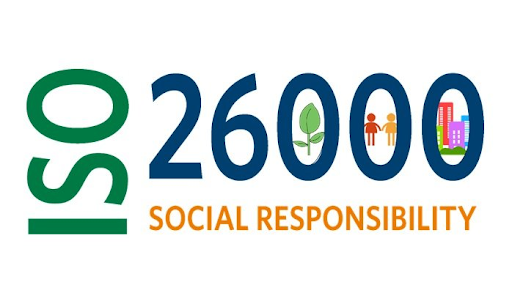In today’s global economy, businesses must operate responsibly, balancing profit-making with social and environmental accountability. ISO 26000, a widely recognized standard for social responsibility, provides valuable guidance for organizations striving to meet these expectations. When paired with Environmental, Social, and Governance (ESG) principles, ISO 26000 offers a comprehensive framework for building a sustainable and ethical business.
This article explores how ISO 26000 and ESG complement each other, helping organizations achieve long-term success while fostering trust and accountability.
What is ISO 26000?
An Overview of ISO 26000
ISO 26000 is a non-certifiable international standard that provides guidance on social responsibility. Developed by the International Organization for Standardization (ISO), it helps organizations integrate social and environmental concerns into their operations and decision-making processes. Unlike other standards, ISO 26000 is not about compliance but about voluntary commitment to responsible practices.
Key Principles of ISO 26000
The framework revolves around seven core subjects:
- Organizational governance
- Human rights
- Labor practices
- The environment
- Fair operating practices
- Consumer issues
- Community involvement and development
These principles guide organizations in identifying and addressing social, environmental, and governance issues effectively.
A Modern Framework for Sustainability
Understanding ESG
ESG stands for Environmental, Social, and Governance, representing a set of criteria that investors use to evaluate a company’s ethical impact and sustainability practices. ESG has become a crucial factor in decision-making, both for businesses and stakeholders, as it aligns profitability with responsibility.
Key Components of ESG
- Environmental: Focuses on a company’s environmental footprint, such as carbon emissions, waste management, and resource conservation.
- Social: Examines how a business manages relationships with employees, customers, and communities.
- Governance: Looks at leadership, corporate ethics, and accountability.
The Intersection of ISO 26000 and ESG
Aligning Social Responsibility with ESG Metrics
ISO 26000 and ESG are natural allies. While ISO 26000 provides the guidelines for socially responsible behavior, ESG offers measurable outcomes that stakeholders can evaluate. This synergy enables the organizations to:
- Implement structured strategies: Using ISO 26000 as a roadmap to improve ESG metrics.
- Enhance transparency: Aligning ISO 26000 practices with ESG disclosures to build trust with investors and consumers.
- Foster innovation: Driving new initiatives in sustainability and governance.
Benefits of Integrating ISO 26000 with ESG
Building Stakeholder Trust
By adhering to ISO 26000 principles and achieving strong ESG metrics, companies demonstrate their commitment to responsible practices. This builds credibility and strengthens relationships with stakeholders, including investors, employees, and consumers.
Enhancing Risk Management
Both ISO 26000 and ESG frameworks encourage proactive identification and mitigation of risks, particularly those related to environmental impacts, labor practices, and governance. This dual approach ensures resilience in a volatile business environment.
Driving Long-Term Success
Organizations that integrate ISO 26000 with ESG are better positioned to achieve long-term profitability. These businesses attract like-minded investors and consumers, fostering sustainable growth while contributing positively to society.
Steps to Build a Responsible Business Framework
Conduct a Gap Analysis
Begin by assessing your organization’s current practices against ISO 26000 guidelines and ESG criteria. Identify areas of improvement and set measurable goals.
Engage Stakeholders
Involve stakeholders in the process to ensure alignment with their expectations. Regular communication and collaboration help create a shared vision for sustainability.
Implement and Monitor Strategies
Develop action plans based on ISO 26000’s core subjects and ESG priorities. Use key performance indicators (KPIs) to monitor progress and make adjustments as needed.
Leverage Technology for Reporting
Use digital tools to streamline data collection and reporting processes. This ensures accuracy and transparency in ESG disclosures, making it easier to showcase compliance with ISO 26000 principles.
Overcoming Challenges in Integration
Complexity of Implementation
Integrating ISO 26000 with ESG requires significant effort, particularly for organizations with global operations. However, breaking down the process into manageable steps can help.
Balancing Short-Term Costs with Long-Term Gains
While initial investments in aligning ISO 26000 and ESG may seem high, the long-term benefits in terms of risk reduction, stakeholder trust, and market competitiveness outweigh the costs.
Conclusion
The synergy between ISO 26000 and ESG provides organizations with a robust framework for building a responsible business. ISO 26000 offers the principles for social responsibility, while ESG delivers the measurable metrics needed to gauge success. Together, they empower businesses to address global challenges, enhance accountability, and achieve sustainable growth.
Incorporating these frameworks into your business strategy is not just a matter of regulatory compliance or investor appeal; it’s a commitment to creating a better future for people and the planet. By embracing the intersection of ISO 26000 and ESG, companies can lead the way in fostering a more equitable and sustainable world.
